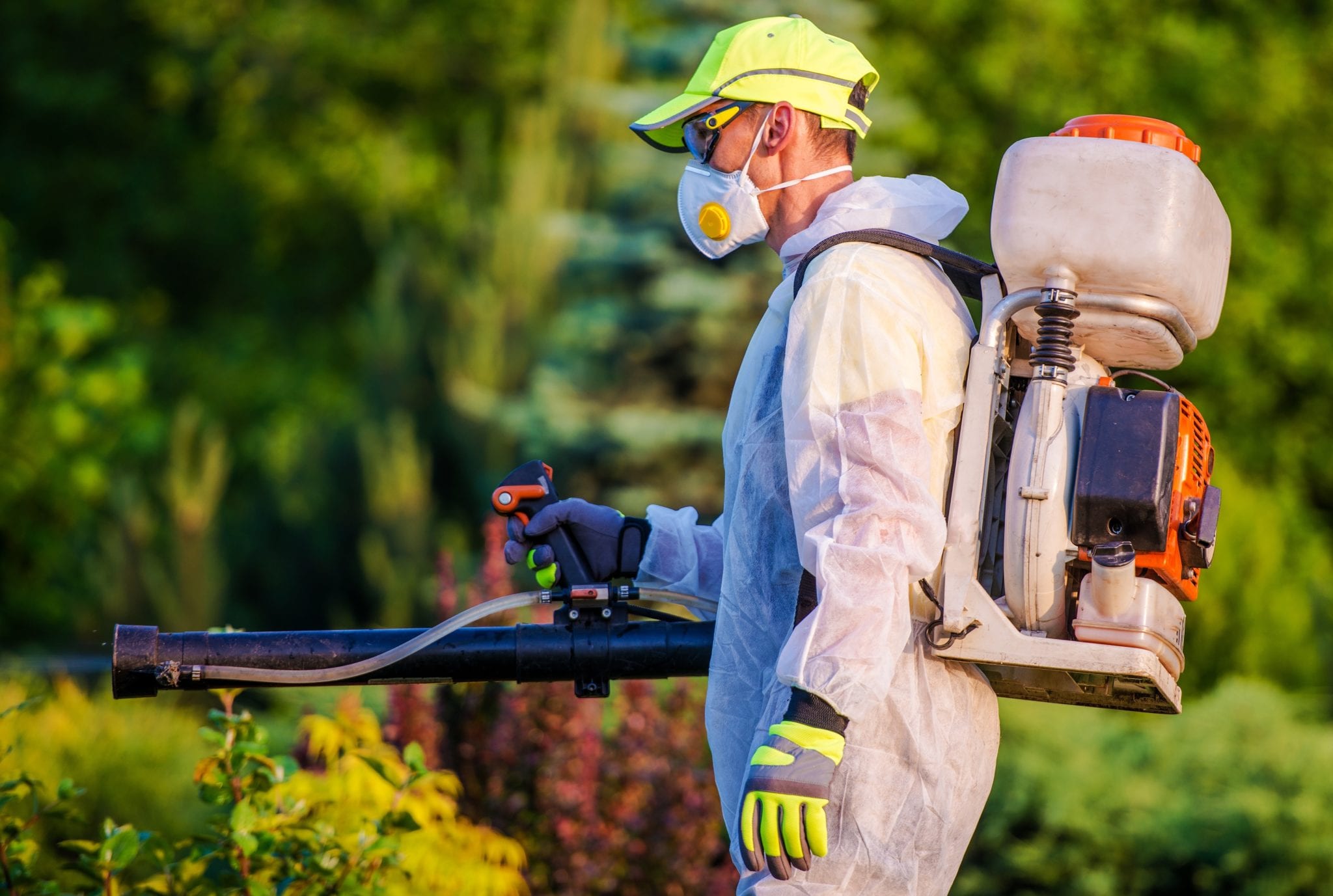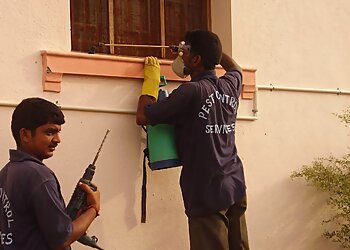Organic Pest Control Services Chicago: Eco-Friendly Pest Administration Options
Organic Pest Control Services Chicago: Eco-Friendly Pest Administration Options
Blog Article
A Comprehensive Guide to the Various Sorts Of Pest Control Approaches
With the myriad of pest control methods available, it can be frustrating to find the most reliable service for a specific parasite issue. In this thorough guide, we will explore these different types of pest control techniques, offering understandings right into their applications and benefits. By the end, you will certainly have a more clear understanding of which approach might be the finest fit for your insect control requirements.
Chemical Insect Control Methods

One common kind of chemical pest control is pesticides. Insecticides target certain bugs, such as mosquitoes, termites, or ants, and can be utilized both inside your home and outdoors.
An additional kind of chemical parasite control is rodenticides. These are chemical compounds developed to manage populaces of rodents, such as rats and computer mice.
Weed killers, likewise called herbicides, are an additional kind of chemical bug control method. Herbicides are created to selectively eliminate undesirable plants, referred to as weeds, without triggering injury to desirable plants. They are frequently used in agriculture, landscape design, and horticulture to regulate the growth of undesirable greenery.
While chemical pest control approaches can be highly reliable in eliminating insects, it is very important to use them judiciously and comply with safety and security guidelines. Overuse or misuse of chemical pesticides can have adverse impacts on human health and wellness and the atmosphere. As a result, it is critical to employ these approaches sensibly and think about alternate insect control techniques whenever possible.
Organic Pest Control Approaches
Biological parasite control techniques include the usage of living microorganisms or all-natural substances to manage and control pest populaces. Unlike chemical methods, which frequently depend on synthetic chemicals, organic control approaches use the all-natural enemies of parasites to regulate their populations. This approach is taken into consideration more eco-friendly and sustainable, as it lowers the use of hazardous chemicals and reduces the risk of pesticide resistance.
One widely used organic pest control technique is the intro of all-natural predators or bloodsuckers. Ladybugs are introduced to regulate aphids, while specific wasp varieties are released to target caterpillars. These killers and parasites prey on parasites, reducing their numbers and preventing invasions.
An additional organic control method is using microorganisms. Specific germs, infections, and fungi can be employed to contaminate and kill specific pests. For circumstances, the germs Bacillus thuringiensis is frequently used to control caterpillars, as it generates contaminants that are deadly to these bugs.
Organic control methods can also involve using scents or all-natural materials that interrupt the breeding patterns of pests. By hindering their reproduction, these methods help to decrease pest populaces gradually.
While biological pest control methods are usually effective, they may require longer durations to achieve preferred results compared to chemical methods. In addition, mindful factor to consider has to be given to the selection and release of natural adversaries to stop unintentional harm to helpful microorganisms or environments.
Physical Pest Control Methods
To effectively take care of and regulate pest populaces, different bug control methods understood as physical pest control methods are used. These approaches include the usage of physical barriers, catches, or gadgets to protect against parasites from accessing or harming residential or commercial property. One common physical parasite control technique is making use of screens or internet to maintain pests out of buildings or gardens. These screens are commonly constructed from great mesh material that permits air flow while avoiding insects from getting in. One more physical parasite control method is the installation of fencings or wall surfaces to maintain larger pests, such as deer or rabbits, out of gardens or farming areas. These barriers literally block the pests' accessibility to the location, decreasing the possibility for damage. In addition, traps and tools can be used to catch or ward off bugs. Sticky traps can be placed in areas where insects are an issue, and the pests come to be stuck to the adhesive surface area. Ultrasonic gadgets can likewise be utilized to release high-frequency noises that are unpleasant to pests, causing them to leave the area. Physical bug control approaches are an eco-friendly find out here option to chemical pesticides, as they do not rely upon the use of dangerous chemicals.
Natural Pest Control Approaches
All-natural bug control methods use a lasting and green method to handling and getting rid of parasites. These techniques focus on the use of natural materials and organic representatives, decreasing the need for chemical pesticides that can harm the atmosphere and human health and wellness. Among over here the most usual all-natural pest control approaches is biological control. This entails introducing natural killers or parasites to take advantage of or parasitize the parasites. Ladybugs are often introduced to gardens to manage aphid populaces. Another natural technique is the usage of repellents stemmed from plants. Particular plants, such as marigolds, lavender, and peppermint, send out fragrances that repel insects like insects, flies, and ants. Furthermore, social control techniques can be used to stop and manage pest invasions. This includes proper cleanliness, normal upkeep, and advertising biodiversity in the garden. Turning plants, removing garden debris, and motivating all-natural killers can aid avoid the build-up of parasites. By embracing these natural parasite control techniques, people and neighborhoods can properly handle parasites while lessening the negative effect on the atmosphere and human health.
Integrated Bug Management (IPM)
Integrated Pest Monitoring (IPM) is a detailed and methodical strategy to pest control that combines different strategies and methods to successfully handle parasites while minimizing using chemical pesticides. IPM aims to preserve insect populaces listed below the economic injury level by making use of a combination of social, biological, and chemical control methods.
Cultural control techniques entail modifying the environment to make it less positive for insects. This can consist of methods such as plant turning, proper sanitation, and making use of immune plant ranges. By creating negative conditions for pests, cultural control methods can substantially decrease parasite populations.

Chemical control approaches are utilized as a last hope in IPM. They involve the targeted and cautious use of chemicals to manage bug populaces. Unlike standard bug control approaches, IPM intends to reduce using chemical pesticides by using alternative methods.
Integrated Parasite Monitoring (IPM) is a positive strategy that focuses on long-lasting parasite management instead of counting only on reactive steps. By incorporating multiple control techniques, IPM gives a much more sustainable and ecologically friendly method to pest control.
Conclusion
It went over chemical, organic, physical, and natural pest control approaches, as well as the incorporated insect administration approach. By understanding these various approaches, people can make educated decisions on which pest control technique is most appropriate for their specific demands and preferences.
Report this page